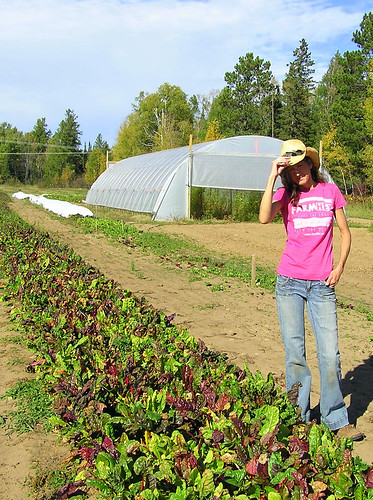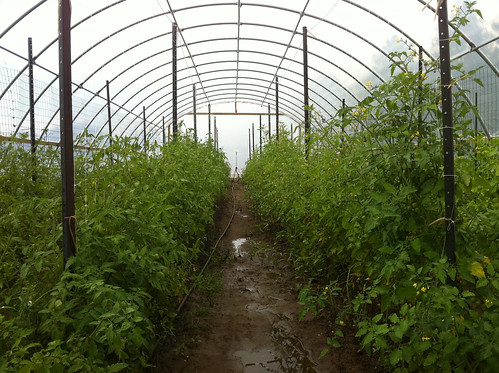
When Kate Paul was a girl in northern St. Louis County, Minn., she enjoyed working in the large family garden near her grandfather’s farm. She loved spending time amid the rows of plants, watching seeds germinate and become plants that provided delicious vegetables for her family.
When she left her hometown for college and graduate school, she was able to continue her passion for farming. While living in the Minneapolis-St. Paul area, she volunteered at a community supported agriculture operation (a CSA).
“I was inspired by the wherewithal of the family that worked the land,” she said. “I was also inspired by the network of community members who gained more than just healthy, fresh food from the farm but also gained a connection to the farm, the farmers and other farm members.”
In a CSA, people buy shares of a farm, and then they receive a share of what the farm grows or raises.
Fast forward a few years, and now she has her own CSA, called Owl Forest Farms. “Through this experience, I was inspired to start my own CSA farm on my family’s land after I moved back home,” she said.
When she was getting started, she learned of USDA’s Natural Resources Conservation Service and visited the local service center. That’s where she met Marjorie Sella, a district conservationist with NRCS. Sella helped Paul create a conservation plan for the 120-acre family farm, where four acres are used for the CSA.
In addition to the technical assistance that Paul got from NRCS through conservation planning, she also applied and received financial assistance through the Environmental Quality Incentives Program, one of the core Farm Bill conservation programs.
This financial assistance helped her build a seasonal high tunnel last year. Seasonal high tunnels are plastic-covered structures that enable farmers to have crops ready earlier or later in the season. In high tunnels, plants are grown directly in the ground, and the sun’s heat regulates the temperature inside.

Seasonal high tunnels are important tools for growing food for local customers, and this effort is part of USDA’s Know Your Farmer, Know Your Food initiative.
“As a result of the high tunnel, I can now jump start my growing season and also extend the growing season into October and November,” she said. “This will help to extend the amount of time I can run deliveries for my farm members. I’m incredibly grateful to have the high tunnel and the new potential it provides my farm.”
In her first season, Paul grew tomatoes, peppers, eggplant, cucumbers and a variety of herbs.
“The thing that made this project different was that Paul was a beginning farmer,” Sella said about Paul. “EQIP allowed her to move forward with planning and applying a practice on her land.”
Paul is grateful for NRCS’ technical and financial assistance as this funding enabled her to meet her conservation planning objectives. She looks forward to future growing seasons, especially the produce from her high tunnel.
To get started with NRCS, visit your local USDA Service Center or www.nrcs.usda.gov/GetStarted. Also, be sure to check out NRCS’ resources for small farms.

